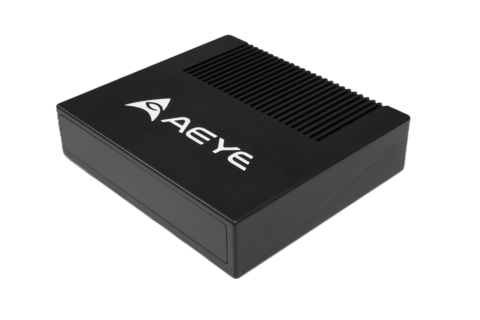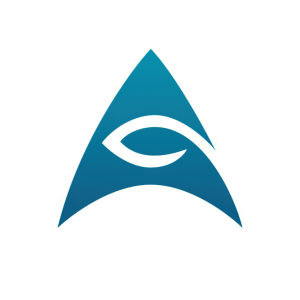AEye to Offer Live Demonstrations of its Apollo Lidar Sensor at CES 2025

AEye's ultra-long range Apollo 4Sight™ Flex (Photo: Business Wire)
The Apollo sensor recently set a new performance bar in the lidar market when it was shown to detect objects at distances of up to one kilometer. This accomplishment, along with having what is believed to be the smallest form factor in the lidar industry, makes Apollo a standout in the growing lidar market.
Matt Fisch, AEye CEO, said, “Collecting high-resolution data over long distances is critical for advancing safety and security in automotive applications. Our Apollo lidar solution, when combined with AI-powered decision-making, offers a powerful alternative or enhancement to conventional camera-based imaging technologies. AI systems need high-resolution data across a wide field of view to quickly identify and react to objects and threats from afar, which is especially vital for ensuring vehicle safety at high speeds. Because of this, we expect Apollo will play a critical role in the future of automotive safety.”
Apollo demos will be available at booth #42227 and in-vehicle to showcase our windshield integration. Those interested in seeing a live Apollo demo should contact us at ces@aeye.ai.
About Apollo
Apollo is the first product in AEye’s 4Sight™ Flex next-generation family of lidar sensors and delivers best-in-class range and resolution in a small, power-efficient, low-cost form factor for both automotive and non-automotive applications. Apollo’s design supports integration behind the windshield, on the roof, or in the grille, which enables OEMs to implement critical safety features with minimal impact to vehicle design. Apollo is believed to be the only 1550nm high-performance lidar capable of behind the windshield integration.
About AEye
AEye’s unique software-defined lidar solution enables advanced driver-assistance, vehicle autonomy, smart infrastructure, and logistics applications that save lives and propel the future of transportation and mobility. AEye’s 4Sight™ Intelligent Sensing Platform, with its adaptive sensor-based operating system, focuses on what matters most: delivering faster, more accurate, and reliable information. AEye’s 4Sight™ products, built on this platform, are ideal for dynamic applications which require precise measurement imaging to ensure safety and performance.
Forward-Looking Statements
Certain statements included in this press release that are not historical facts are forward-looking statements within the meaning of the federal securities laws, including the safe harbor provisions under the United States Private Securities Litigation Reform Act of 1995. Forward-looking statements are sometimes accompanied by words such as “believe,” “continue,” “project,” “expect,” “anticipate,” “estimate,” “intend,” “strategy,” “future,” “opportunity,” “predict,” “plan,” “may,” “should,” “will,” “would,” “potential,” “seem,” “seek,” “outlook,” and similar expressions that predict or indicate future events or trends, or that are not statements of historical matters. Forward-looking statements are predictions, projections, and other statements about future events that are based on current expectations and assumptions and, as a result, are subject to risks and uncertainties. Forward-looking statements included in this press release include statements about the performance of AEye’s Apollo lidar sensor and the market need for lidar sensors with Apollo’s demonstrated performance, among others. These statements are based on various assumptions, whether or not identified in this press release. These forward-looking statements are provided for illustrative purposes only and are not intended to serve as and must not be relied on by an investor as a guarantee, an assurance, a prediction, or a definitive statement of fact or probability. Actual events and circumstances are very difficult or impossible to predict and will differ from the assumptions. Many actual events and circumstances are beyond the control of AEye. Many factors could cause actual future events to differ from the forward-looking statements in this press release, including but not limited to: (i) the risks that the ability to detect objects at distance of up to one kilometer and the smallest form factor in the lidar industry, may not make Apollo a standout in the growing lidar market to the extent anticipated, or at all; (ii) the risks that the lidar market may not continue to grow to the extent anticipated, or at all; (iii) the risks that the collection of high-resolution data over long distances may not be as critical to advancing safety and security in automotive applications to the extent anticipated, or at all; (iv) the risks that the Apollo lidar solution, when combined with AI-powered decision-making, may not offer a powerful alternative or enhancement to conventional camera-based imaging technologies to the extent anticipated, or at all; (v) the risks that the need for high-resolution data for AI systems may be effectively created by systems other than lidar; (vi) the risks that Apollo may not play a critical role in the future of automotive safety to the extent anticipated, or at all; (vii) the risks that competitors in the lidar industry may have already, or may soon, exceed Apollo’s performance, at over one kilometer; (viii) the risks that despite Apollo having a small form factor, it may require OEMs to compromise some or all of their design standards; (ix) the risks that high-resolution data collection at long distances may not be essential for enhancing automotive safety to the extent anticipated, or at all; (x) the risks that AI-based decision-making systems may not be significantly enhanced by long-range high-resolution data to the extent anticipated, or at all; (xi) the risks that lidar adoption may occur slower than anticipated or fail to occur at all; (xii) the risks that AEye’s products may not meet the diverse range of performance and functional requirements of target markets and customers; (xiii) the risks that AEye’s products may not function as anticipated by AEye, or by target markets and customers; (xiv) the risks that AEye may not be in a position to adequately or timely address either the near or long-term opportunities that may or may not exist in the evolving autonomous transportation industry; (xv) the risks that laws and regulations are adopted impacting the use of lidar that AEye is unable to comply with, in whole or in part; (xvi) the risks associated with changes in competitive and regulated industries in which AEye operates, variations in operating performance across competitors, and changes in laws and regulations affecting AEye’s business; (xvii) the risks that AEye is unable to adequately implement its business plans, forecasts, and other expectations, and identify and realize additional opportunities; and (xviii) the risks of economic downturns and a changing regulatory landscape in the highly competitive and evolving industry in which AEye operates. These risks and uncertainties may be amplified by current or future global conflicts and the lingering effects of the COVID-19 pandemic, which continues to cause economic uncertainty. The foregoing list of factors is not exhaustive. You should carefully consider the foregoing factors, and the other risks and uncertainties described in the “Risk Factors” section of the periodic report that AEye has most recently filed with the
Readers are cautioned not to put undue reliance on forward-looking statements; AEye assumes no obligation and does not intend to update or revise these forward-looking statements, whether as a result of new information, future events, or otherwise. AEye gives no assurance that AEye will achieve any of its expectations.
View source version on businesswire.com: https://www.businesswire.com/news/home/20241217914400/en/
Investor Relations Contacts
Agency Contact
Financial Profiles, Inc.
Evan Niu, CFA
eniu@finprofiles.com
310-622-8243
Company Contact
AEye, Inc. Investor Relations
info@aeye.ai
925-400-4366
Source: AEye, Inc.







